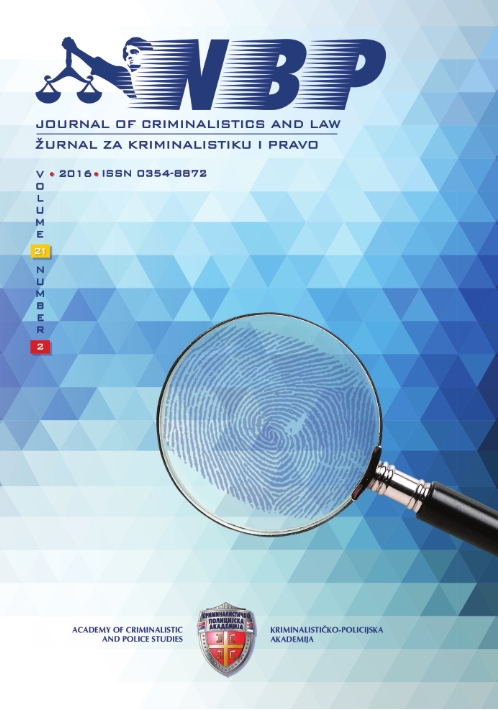Krađe ikona
Thefts of Icons
Author(s): Renata SamardžićSubject(s): Christian Theology and Religion, Criminal Law
Published by: Kriminalističko-policijski univerzitet
Keywords: icons; Orthodox Christianity; liturgical objects; thefts; Russia; Serbia; Cyprus
Summary/Abstract: The paper first considers certain issues related to the Orthodox icons, and points out to their specific features that differentiate them in relation to any other religious picture. As a hallmark of Orthodox religion, icons represent the artistic expression of theology and service of the Church, whose nature and meaning were defined at the Seventh Ecumenical Council of Nicaea (787 A.D.). The paper also considers the conflict between iconoclasts and iconodules based on different interpretations of the Christological dogma, which ended in the rejection of iconoclasm and definition of the Byzantine concept of image. According to the words of Saint Basil the Great, the one who stands before an icon, worships it in a way that the honour paid to the icon passes to the archetype. The art of icon painting experienced its golden age in Russia in the period from XIV to XVI century, while in XVII century perception of icons underwent a change, when the difference between the icon as a liturgical object and secular image became smaller. This break with tradition was especially noticeable during the reign of Peter the Great and Catherine II, when in the Europeanized Russia iconography was replaced by salon style painting. The new interest of the Russian elite for iconography (emerged as a reaction to the official art) occurred at the end of XIX and early XX century, when the first private collections of icons were created. In this period, Russian icons began penetrating the world of Western culture, which was particularly facilitated by the Russian emigration from the Soviet Russia, as well as the exhibitions of Russian icons organized abroad. Over time, icons became highly demanded among collectors in the West. On the market, they received the commodity value (the same as any other work of art). After the collapse of the Soviet Union, about fifty criminal groups were active in Western Europe, which were involved in art crime. In Germany, the USA, Italy, Israel, France and Great Britain, antique shops specialized in antique Russian icons trade were opened. When their auction value began to rise, icons became object of interest of the Russian mafia. In the third part of the paper, the current situation in Russia, Cyprus and Serbia was analysed.
Journal: NBP – Nauka, bezbednost, policija
- Issue Year: 21/2016
- Issue No: 2
- Page Range: 181-196
- Page Count: 16
- Language: Serbian

